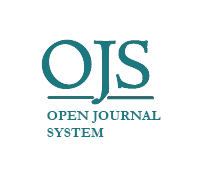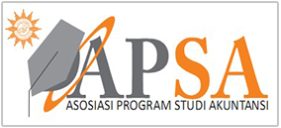Hexagon Sustainability: Dekonstruksi Pentuple Bottom Line
DOI:
https://doi.org/10.22219/jrak.v13i3.26024Keywords:
Phenotechnology, Prophet, Purpose, Sustainability, TBLAbstract
Purpose: to explain how the concept of comprehensive sustainability is based on an Islamic perspective (Al Quran and Hadith).
Methodology/approach: This research is a study using the method of literature study on the topic of sustainability in an Islamic perspective. Data analysis in this study uses the concept of technology to deconstruct the Pentuple Bottom Line (PBL) concept. This research will present the hexagon bottom line concept, which is more complete than the PBL, QBL, and TBL concepts.
Findings: Sustainability consists of six elements: profit that profit or welfare in the economic aspect is important, but must be balanced with other P; planet means that maintaining the natural environment as a counterweight to the operational activities of an organization's contribution; people which means that a balance with the welfare of the community (internal and external to the organization) or the community is important to contribute to the corporation; prophet explains that mental and spiritual balance in the process of preserving the life of an organization; purpose that the real purpose and happiness of humans is to meet God, so humans must be able to maintain habluminallah well; phenotechnology explains that the phenomenon of information technology must be an important part of maintaining corporate survival.
Practical implications: The implementation of sustainability should be done comprehensively by taking into account the elements of profit, people, planet. Prophet, purpose, and phenotechnology.
Originality/value: This research adds technological elements to the PBL concept, thus deconstructing the PBL concept. The deconstruction in this research will be able to produce a new concept based on the Islamic perspective (Al Quran and Hadith).
Downloads
References
Abbasi, A. S., Rehman, K. ur, & Bibi, A. (2010). Islamic Leadership Model an Accountability Perspectice. World Applied Sciences Journal, 9(3). Available online at http://www.idosi.org/wasj/wasj9(3)/1.pdf (accessed on 7th July 2023)
Afandi, A. F. (2020). Modernimse Dan Kerusakan Lingkungan Dalam Perspektif Islam. Jaqfi: Jurnal Aqidah Dan Filsafat Islam, 5(1), 14–34. https://doi.org/10.15575/jaqfi.v5i1.5108
Ali, A. J., Al-Aali, A., & Al-Owaihan, A. (2013). Islamic Perspectives on Profit Maximization. Journal of Business Ethics, 117(3), 467–475. https://doi.org/10.1007/s10551-012-1530-0
Alkharabsheh, A., Ahmad, Z. A., & Kharabsheh, A. (2014). Characteristics of Crisis and Decision Making Styles: The Mediating Role of Leadership Styles. Procedia - Social and Behavioral Sciences, 129, 282–288. https://doi.org/10.1016/j.sbspro.2014.03.678
Azman, I., Wan Aishah, W. M. N., Nurrul Hayati, A., Hasan Al-Banna, M., & Raja Rizal Iskandar, R. H. (2015). Relationship between manager’s role in career program and employee proactive behaviour development. Global Journal Al-Thaqafah, 5(1), 81–103. https://doi.org/10.7187/gjat812015.05.01
Bătae, O. M., Dragomir, D., & Feleagă, L. (2020). Environmental, social, governance (ESG), and financial performance of European banks. Accounting and Management Information Systems, 19(3), 480–501. http://dx.doi.org/10.24818/jamis.2020.03003
Budsaratragoon, P., & Jitmaneeroj, B. (2019). Measuring causal relations and identifying critical drivers for corporate sustainability: the quadruple bottom line approach. Measuring Business Excellence, 23(3), 292–316. https://doi.org/10.1108/MBE-10-2017-0080
Chaman, M. (2023). How Islamic Leadership Traits of Truthfulness , Advocacy , Trustworthiness , and Wisdom , Effects Employee s ’ Life Satisfaction Performance : The Mediatory Role of Employee Engagement and Organizational Citizenship Behavior. SSRN Electronic Journal. http://dx.doi.org/10.2139/ssrn.4432155
Elkington, J. (1997). Accounting for the Triple Bottom Line". Measuring Business Excellence, 2(3), 18–22. https://doi.org/https://doi.org/10.1108/eb025539
Fatemi, A., Glaum, M., & Kaiser, S. (2018). ESG performance and firm value: The moderating role of disclosure. Global Finance Journal, 38, 45–64. https://doi.org/10.1016/j.gfj.2017.03.001
Hadders, H. (1997). The Adaptive Quadruple Bottom Line Scorecard : Measuring organizational sustainability performance. 1–18. Available online at http://www.csin-rcid.ca/downloads/csin_conf_henk_hadders.pdf (accessed on 7th July 2023)
Hamdan, A. (2012). The role of authentic Islam: The way forward for women in Saudi Arabia. Hawwa, 10(3), 200–220. https://doi.org/10.1163/15692086-12341237
Han, J., & Kim, H. J. (2016). Empirical study on relationship between corporate social responsibility and financial performance in Korea. Asian Journal of Sustainability and Social Responsibility, 1–16. https://doi.org/10.1186/s41180-016-0002-3
Hossain, M. Z. (2018). Towards A Green World: an Islamic Perspective. International Journal of Contemporary Research and Review, 9(08), 20181–20193. https://doi.org/10.15520/ijcrr/2018/9/08/580
Irawan, D., & Mudrifah. (2022). Akuntabilitas keuangan pada amal usaha muhammadiyah: sebuah pendekatan kualitatif. Jurnal Akademi Akuntansi, 5(4), 595–601. https://doi.org/10.22219/jaa.v5i4.27001
Iryani, L. D., Yadiati, W., Soepardi, E. M., & Triyuwono, I. (2019). Measuring the managerial performance of islamic banking using the concept of pentuple bottom line. International Journal of Innovation, Creativity and Change, 6(9), 53–74. Available online at https://www.ijicc.net/images/Vol6Iss9/6906_Iryani_2019_E_R.pdf (accessed on 1st October 2020)
Mais, R. G., Ganis, E., Rahman, A. F., & Mulawarman, A. D. (2017). Tanggung Jawab Sosial Perusahaan: Aktualisasi Ajaran Jaudatul Ada (Penyelesaian Yang Baik) Dalam Bisnis (Studi Kasus Bsm). Jurnal Reviu Akuntansi Dan Keuangan, 7(1), 1003. https://doi.org/10.22219/jrak.v7i1.14
Mais, R. G., Sukoharsono, E. G., Rahman, A. F., & Mulawarman, A. D. (2019). Concept of Corporate Social Responsibility According to Perspective of Ihsan on Sharia Banking. 5th Annual International Conference on Accounting Research (AICAR 2018), 73, 178–181. https://doi.org/10.2991/aicar-18.2019.38
Mamat, M. N., Mahamood, S. F., & Ismail, I. (2012). Islamic Philosophy on Behaviour - Based Environmental Attitude. Procedia - Social and Behavioral Sciences, 49, 85–92. https://doi.org/10.1016/j.sbspro.2012.07.008
Manta, F., Tarulli, A., Morrone, D., & Toma, P. (2020). Toward a quadruple bottom line: Social disclosure and financial performance in the banking sector. Sustainability (Switzerland), 12(10), 1–18. https://doi.org/10.3390/SU12104038
Minutolo, M. C., Kristjanpoller, W. D., & Stakeley, J. (2019). Exploring environmental, social, and governance disclosure effects on the S&P 500 financial performance. Business Strategy and the Environment, 28(6), 1083–1095. https://doi.org/10.1002/bse.2303
Mulamoottil, A. (2019). Toward a Quintuple Bottom Line in Higher Education Institutions: Sustainability Practices in Higher Education. Journal of Management for Global Sustainability, 7(2), 83–99. https://doi.org/10.13185/jm2019.07205
Muthmainnah, L., Mustansyir, R., & Tjahyadi, S. (2020). Meninjau Ulang Sustainable Development: Kajian Filosofis Atas Dilema Pengelolaan Lingkungan Hidup di Era Post Modern. Jurnal Filsafat, 30(1), 23. https://doi.org/10.22146/jf.49109
purwanto, F. A. (2019). the Implementation of Pentaple Bottom Line Concept in Companys Social Responsibility Program Pt Pelindo Iii. International Journal of Advanced Research, 7(10), 550–553. https://doi.org/10.21474/ijar01/9865
Sachit, S., & Tulchin, D. (2014). Quadruple bottom line. Social Enterprise Associates, 2. Available online at http://upspringassociates.com/wp-content/uploads/2014/09/TipSheet13QBL.pdf (accessed on 1st October 2020)Safi, L. (1995). Leadership and Subordination. American Journal of Islam and Society, 12(2), 204–223. https://doi.org/10.35632/ajis.v12i2.2387
Saniotis, A. (2012). Muslims and ecology: Fostering Islamic environmental ethics. Contemporary Islam, 6(2), 155–171. https://doi.org/10.1007/s11562-011-0173-8
Silva, D. P. A. K. H. (2018). Bottom Line Concept and Its Implimentation In Organizations, Critical Review Of Contemporary Literature on The Quadruple Bottom Line Concept and Its Implimentation In Organizations, Including The Roles The Quadruple Bottom Line (QBL). ResearchGate, August. Available online at https://www.researchgate.net/publication/326986306 (accessed on 22nd October 2020)
Sukoharsono, E. G. (2018). Strategies To Improve the Sustainability in Promoting Transparency, Accountability and Anti-Corruption: an Imaginary Dialogue. The International Journal of Accounting and Business Society, 26(1), 39–54. https://doi.org/10.21776/ub.ijabs.2018.26.1.3
Sukoharsono, E. G. (2019). Sustaining a Sustainability Report By Modifying Triple Bottom Line To Pentaple Bottom Line: an Imaginary Research Dialogue. The International Journal of Accounting and Business Society, 27(1), 119–127. https://doi.org/10.21776/ub.ijabs.2019.27.1.7
Suyudi, M. (2012). Quardrangle Bottom Line (QBL) dalam Praktik Sustainability Reporting Dimensi “Spiritual Performance.” Jurnal Akuntansi Multiparadigma, 3(April), 1–14. https://doi.org/10.18202/jamal.2012.04.7148
Taufiq, M., Kombaitan, B., & Putro, H. P. H. (2018). Csr, Suatu Refleksi Perencanaan Transaktif: Perspektif Filsafat Ilmu Pengetahuan. Tataloka, 20(2), 136. https://doi.org/10.14710/tataloka.20.2.136-147
Triyuwono, I. (2016). Taqwa : Deconstructing Triple Bottom Line ( TBL ) to Awake Human’s Divine Consciousness. Pertanika, 24, 89–104. Availabel online at http://www.pertanika.upm.edu.my/pjtas/browse/regular-issue?article=JSSH-S0194-2016 (accessed on 1st October 2020)
Wang, Z., & Sarkis, J. (2017). Corporate social responsibility governance, outcomes, and financial performance. Journal of Cleaner Production, 162, 1607–1616. https://doi.org/10.1016/j.jclepro.2017.06.142
Zhang, T., Avery, G. C., Bergsteiner, H., & More, E. (2014). The relationship between leadership paradigms and employee engagement. Journal of Global Responsibility, 5(1), 4–21. https://doi.org/10.1108/JGR-02-2014-0006
Downloads
Published
Issue
Section
License
Copyright (c) 2023 Susi Handayani

This work is licensed under a Creative Commons Attribution-NonCommercial-ShareAlike 4.0 International License.

Jurnal Reviu Akuntansi dan Keuangan is licensed under a Creative Commons Attribution-NonCommercial-ShareAlike 4.0 International License.
Authors who publish with this journal agree to the following terms:
- Authors retain copyright and grant the journal right of first publication with the work simultaneously licensed under a Creative Commons Attribution-NonCommercial-ShareAlike 4.0 International License that allows others to share the work with an acknowledgement of the work's authorship and initial publication in this journal.
- Authors are able to enter into separate, additional contractual arrangements for the non-exclusive distribution of the journal's published version of the work (e.g., post it to an institutional repository or publish it in a book), with an acknowledgement of its initial publication in this journal.
- Authors are permitted and encouraged to post their work online (e.g., in institutional repositories or on their website) prior to and during the submission process, as it can lead to productive exchanges, as well as earlier and greater citation of published work (See The Effect of Open Access).










